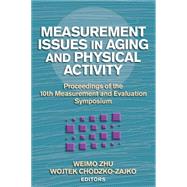
| Sponsors | xi | ||||
| Contributors | xiii | ||||
| Preface | xv | ||||
| Part I Critical Issues in Aging and Physical Activity Research | |||||
|
3 | (8) | |||
|
|||||
|
3 | (2) | |||
|
5 | (2) | |||
|
7 | (3) | |||
|
10 | (1) | |||
|
11 | (12) | |||
|
|||||
|
12 | (1) | |||
|
13 | (1) | |||
|
13 | (6) | |||
|
19 | (1) | |||
|
20 | (1) | |||
|
20 | (1) | |||
|
21 | (1) | |||
|
22 | (1) | |||
|
22 | (1) | |||
|
23 | (12) | |||
|
|||||
|
23 | (1) | |||
|
24 | (1) | |||
|
25 | (1) | |||
|
26 | (1) | |||
|
26 | (1) | |||
|
27 | (1) | |||
|
28 | (1) | |||
|
28 | (5) | |||
|
33 | (2) | |||
|
35 | (14) | |||
|
|||||
|
37 | (5) | |||
|
42 | (2) | |||
|
44 | (1) | |||
|
45 | (1) | |||
|
46 | (3) | |||
|
49 | (8) | |||
|
|||||
|
49 | (1) | |||
|
50 | (1) | |||
|
50 | (1) | |||
|
51 | (1) | |||
|
51 | (1) | |||
|
52 | (2) | |||
|
54 | (3) | |||
| Part II Measurement Challenges in Aging Research | |||||
|
57 | (12) | |||
|
|||||
|
58 | (1) | |||
|
59 | (1) | |||
|
60 | (2) | |||
|
62 | (1) | |||
|
63 | (1) | |||
|
64 | (4) | |||
|
68 | (1) | |||
|
69 | (12) | |||
|
|||||
|
70 | (2) | |||
|
72 | (1) | |||
|
73 | (1) | |||
|
74 | (5) | |||
|
79 | (2) | |||
|
81 | (8) | |||
|
|||||
|
85 | (1) | |||
|
86 | (1) | |||
|
86 | (1) | |||
|
87 | (1) | |||
|
88 | (1) | |||
|
89 | (12) | |||
|
|||||
|
89 | (2) | |||
|
91 | (1) | |||
|
92 | (1) | |||
|
93 | (5) | |||
|
98 | (2) | |||
|
100 | (1) | |||
|
101 | (14) | |||
|
|||||
|
101 | (1) | |||
|
102 | (3) | |||
|
105 | (1) | |||
|
106 | (1) | |||
|
107 | (2) | |||
|
109 | (1) | |||
|
110 | (1) | |||
|
111 | (1) | |||
|
112 | (3) | |||
| Part III New Measurement Methods and Techniques | |||||
|
115 | (10) | |||
|
|||||
|
120 | (4) | |||
|
124 | (1) | |||
|
125 | (12) | |||
|
|||||
| Part IV Measurement in Kinesiology: Past, Present, and Future | |||||
|
137 | (8) | |||
|
|||||
|
137 | (1) | |||
|
137 | (1) | |||
|
138 | (2) | |||
|
140 | (5) | |||
|
145 | (8) | |||
|
|||||
|
146 | (1) | |||
|
146 | (2) | |||
|
148 | (4) | |||
|
152 | (1) | |||
| Appendix: The 10th Measurement and Evaluation Symposium Program | 153 | (10) | |||
| References | 163 | (26) | |||
| About the Editors | 189 |
The New copy of this book will include any supplemental materials advertised. Please check the title of the book to determine if it should include any access cards, study guides, lab manuals, CDs, etc.
The Used, Rental and eBook copies of this book are not guaranteed to include any supplemental materials. Typically, only the book itself is included. This is true even if the title states it includes any access cards, study guides, lab manuals, CDs, etc.